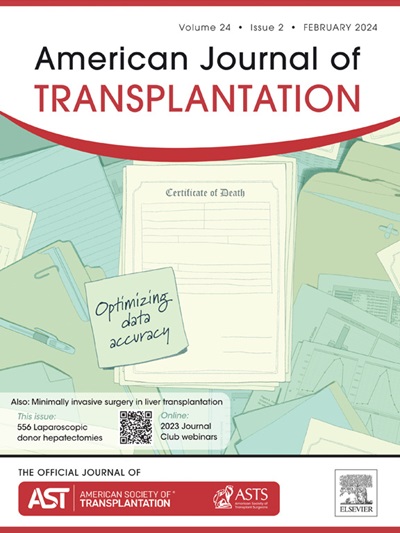小鼠心脏移植的最佳实践。
IF 8.2
2区 医学
Q1 SURGERY
引用次数: 0
摘要
半个多世纪以来,小鼠心脏移植一直是世界范围内移植研究中可靠的活体模型。它不仅有助于解决心脏移植物特异性问题,而且还提供了对所有实体器官移植具有广泛影响的机制见解和治疗策略。与其他实体器官移植的小鼠模型(如肾、肺或小肠移植)相比,进行小鼠心脏移植(mHT)的手术技术相对容易掌握,移植物心跳提供了评估移植可行性的简单手段。然而,与其他体内小鼠模型一样,mHT具有明显的优势和局限性。多种因素可影响结果的准确性和可重复性,包括显微外科技术和显微外科医生的技能、术后监测方法、小鼠品系组合、性别/年龄。随着创新生物技术的不断涌现,未来利用mHT模型进行临床前研究的机会很多。因此,必须为该领域提供优化的mHT协议并保持标准的报告要求。这篇小型综述为标准化实践提供了简明的总结和建议,以确保mHT模型产生的结果的准确性、可重复性和转化价值。本文章由计算机程序翻译,如有差异,请以英文原文为准。
Best practices of heart transplantation in mice
Heart transplantation in mice has served as a reliable in vivo model in transplant research worldwide for more than half a century. It is not only useful for addressing cardiac graft-specific questions but also provides mechanistic insights and therapeutic strategies that have a broad impact across all solid organ transplants. Compared to other mouse models of solid organ transplantation, such as kidney, lung, or small intestine transplants, the surgical techniques to perform mouse heart transplantation (mHT) are relatively easy to master, and the graft heartbeat offers a simple means to evaluate transplant viability. However, as with other in vivo mouse models, mHT has distinct strengths and limitations. Multiple factors can influence the accuracy and reproducibility of the results, including microsurgical techniques and microsurgeons’ skills, postoperative monitoring methodologies, mouse strain combinations, and sex/age. As innovative biotechnologies continue to emerge, the future holds many opportunities for preclinical research utilizing the mHT model. It is therefore imperative to provide the field with optimized mHT protocols and maintain standard reporting requirements. This minireview provided a concise summary and recommendations for standardized practices to ensure the accuracy, reproducibility, and translational value of findings generated from the mHT model.
求助全文
通过发布文献求助,成功后即可免费获取论文全文。
去求助
来源期刊
CiteScore
18.70
自引率
4.50%
发文量
346
审稿时长
26 days
期刊介绍:
The American Journal of Transplantation is a leading journal in the field of transplantation. It serves as a forum for debate and reassessment, an agent of change, and a major platform for promoting understanding, improving results, and advancing science. Published monthly, it provides an essential resource for researchers and clinicians worldwide.
The journal publishes original articles, case reports, invited reviews, letters to the editor, critical reviews, news features, consensus documents, and guidelines over 12 issues a year. It covers all major subject areas in transplantation, including thoracic (heart, lung), abdominal (kidney, liver, pancreas, islets), tissue and stem cell transplantation, organ and tissue donation and preservation, tissue injury, repair, inflammation, and aging, histocompatibility, drugs and pharmacology, graft survival, and prevention of graft dysfunction and failure. It also explores ethical and social issues in the field.

 求助内容:
求助内容: 应助结果提醒方式:
应助结果提醒方式:


